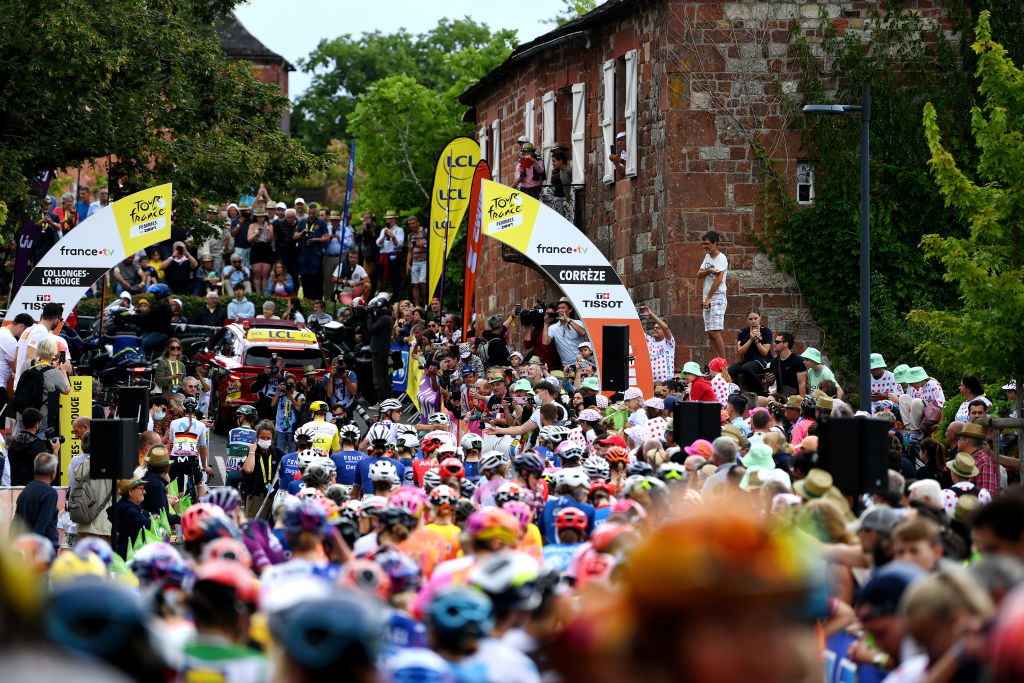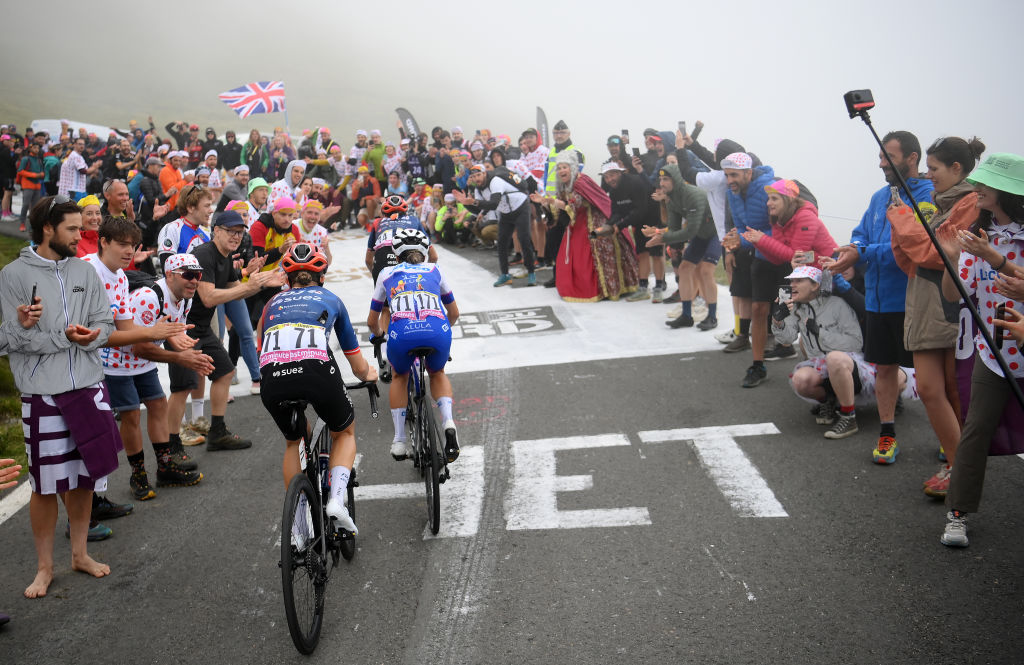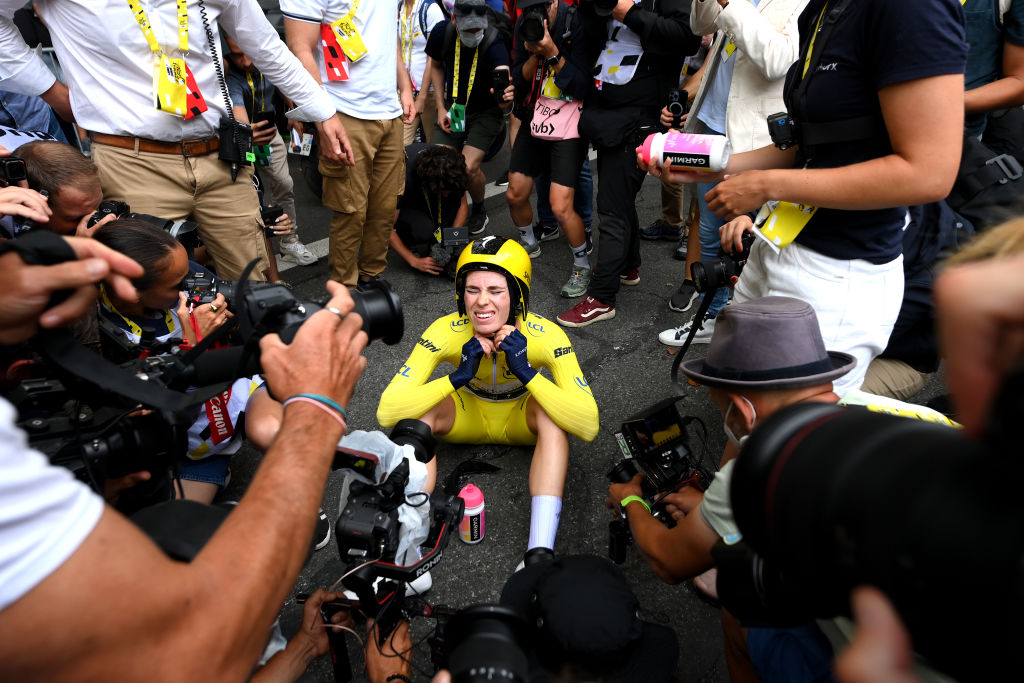A foreign start, Classics terrain and Alpe d’Huez - Analysing the 2024 Tour de France Femmes route
Can anyone beat SD Worx on this course?

After just two editions, the Tour de France Femmes avec Zwift has already established itself as the premier event on the Women’s WorldTour calendar.
The prestige of the Tour name, coupled with the experienced organisation of ASO, has succeeded in elevating the profile of women’s racing, giving the riders an opportunity to race for an emblem that transcends the sport: the yellow jersey.
Before the route for the third edition was officially presented in Paris on Wednesday, we knew that the race would feature a Grand Départ outside of France for the first time, in Rotterdam, The Netherlands.
In the days before the presentation, rumours also began to circulate of an Alpe d’Huez finish for the final stage of the 2024 race. Following on from the Col du Tourmalet in 2023, an Alpe d’Huez grand finale would be another key draw, building on the memorable parcours of the two previous iterations.
The aim has been to steadily increase the length and difficulty of the race as the depth of the women’s peloton increases with each year. From a weekend finale in the Vosges mountains in 2022, to the Col du Tourmalet in 2023, it was confirmed that the race will now head to the Alps for the first time with the women finally tackling the 21 hairpins of l’Alpe d’Huez.
But what else does the route have in store, and what will it mean for the outcome?
A race of two halves
Although the race will finish atop one of the most iconic French cycling arenas, it begins much further away, in Rotterdam. After establishing an entirely separate race from the men’s event in 2023, the Tour de France Femmes continues to go its own way, with two opening stages in Rotterdam and stage 4 also starting in the Netherlands before crossing the border into Belgium.
Get The Leadout Newsletter
The latest race content, interviews, features, reviews and expert buying guides, direct to your inbox!
It is only on stage 5 that the peloton will finally enter the country after which the race is named, heading from Bastogne in the Wallonie region of Belgium to Amnéville in the northeast of France.
Before that, however, they will tackle a flat 124km opening stage from Rotterdam to The Hague. The pan-flat parcours and a wide, uncomplicated final 5km means the stage has ‘bunch sprint’ written all over it. It should be a fairly straightforward day, providing the wind doesn’t wreak havoc as the riders traverse the wide open roads surrounded by tulip fields.
In an unusual twist, the second and third stages will take place across a single day. Dordrecht will host the start of a surprisingly short 67km road stage before the peloton tackles a 6.7km individual time trial that same afternoon.
With no climbs to contend with over such a short distance, the road stage will be fast and furious, most likely finishing in another bunch kick. Although the time trial in the afternoon makes the day a long one, the total distance across both stages still only reaches 73.7km, far less than the peloton is used to tackling.
The afternoon’s time trial covers a similar route to the prologue of the 2010 Tour de France and, at just 6.7km, is likely to favour punchier riders over GC hopefuls, the latter of whom will be unlikely to be able to make too much of a difference.
Stage 4 presents a more challenging parcours as the riders head into the Ardennes, with France still very far away. Starting in Valkenburg and finishing in Liège, the riders will be familiar with the climbs as many will have raced them just a few months prior. Defending Tour de France champion and triple 2023 Ardennes winner Demi Vollering (SD Worx) will likely be licking her lips at this stage and undoubtedly hoping to use it as an early launchpad.
Then, finally, to France – halfway through stage 5.
While it is common for the men’s race to have foreign Départs, the women’s race doesn’t quite feel long enough at eight stages to justify spending almost half of those outside of France.
Of course, Classics fans and specialists will be pleased with the race’s trip to the Netherlands and Belgium for a Classics re-run, but will it remove some of the Tour feeling?
Challenging climbs

If the opening stages seem incongruous, and a little distant from the quintessential Tour de France feeling, then the remaining three certainly make up for it.
The 160km stage 6 from Remiremont to Morteau transitions the race towards the Alps with some medium climbs towards the end. Stage 7 is hillier still, finishing atop Le Grand-Bornand, which in 2018 at La Course saw a fierce battle between two now-retired greats of the women’s peloton, Annemiek van Vleuten and Anna van der Breggen.
This time, Van der Breggen will be in the driver’s seat as director at Team SD Worx, while Van Vleuten might be watching on and feeling like she missed out, particularly on the final stage up Alpe d’Huez.
The now-40-year-old expressed a desire to race up the famous switchbacks at the finish of the inaugural Tour de France Femmes, telling the media: “Actually, I would hope – because next year will be the last year – that we can maybe have Alpe d'Huez.”
Unfortunately for the former Tour winner, the addition came a year too late, but while fears of Van Vleuten racing away with the win by a huge margin made people wary of adding such a climb, it is a different Dutchwoman who is in danger of doing so this time around. After her display on the Col du Tourmalet at this year’s race, Demi Vollering made clear her claim as the strongest climber in the peloton.
However, the two climbs offer a slightly different challenge, with Alpe d’Huez coming in shorter but steeper than the Tourmalet, meaning that others may be in contention for longer.
Whether Vollering wins by a mile or not, the fact that the race is going to a climb that is steeped in Tour history is a win for the whole peloton. If the unforgettable images from the Planche des Belles Filles and Col du Tourmalet are anything to go by, then the atmosphere on Alpe d’Huez will be electric.
Can anyone beat SD Worx on this course?

The overarching theme of the 2023 season was the dominating power of SD Worx, raising the question of how other teams could beat their incredible collective strength.
The Tour de France was no exception, with Demi Vollering and Lotte Kopecky going 1-2 on the overall podium and taking home both the yellow and green jerseys while the team also won four of the eight stages.
This terrain looks likely to suit the team to a tee, with flat opening stages for their top sprinter, Lorena Wiebes, to mop up, a power ITT built for Lotte Kopecky if she ends up racing despite her Olympic track ambitions, and everything from the Ardennes-style climbs to Alpe d’Huez for GC leader Demi Vollering.
Of course, when you’re the most dominant team on the circuit, any parcours suits, and SD Worx would be hard to beat in any race.
The 2024 Tour de France Femmes route, however, plays into the team’s strengths, meaning that it will take a very strong contender to stand in the way of Demi Vollering and a back-to-back GC victory.
Post-Paris
One final consideration around how this race might be tackled is that it takes place just over a week after the women’s road race at the Paris 2024 Olympic Games. The effect of this could go one of two ways for the riders; either they will still be in top form after one of their biggest targets of the year, meaning we could be looking at one of the most fiercely contested Tours so far, or they will be mentally and physically spent post-Games. We could see some sitting the Tour out after the Olympics, although the favourites, including Vollering, are unlikely to want to miss out.
Despite an unusual start to the race and a shift in its place on the calendar the 2024 Tour de France Femmes route shows a continued commitment from ASO to growing the event. Marion Rousse and her colleagues are clearly not afraid to present the women with a challenge, which although it often means that we see less variation in the result, is essential for the growth of the sport as a whole.
With a varied route both geographically and in terms of terrain, and a crescendo atop Alpe d’Huez, the 2024 race will undoubtedly deliver the explosive and exciting racing we have become used to over the past two editions of the Tour de France Femmes.